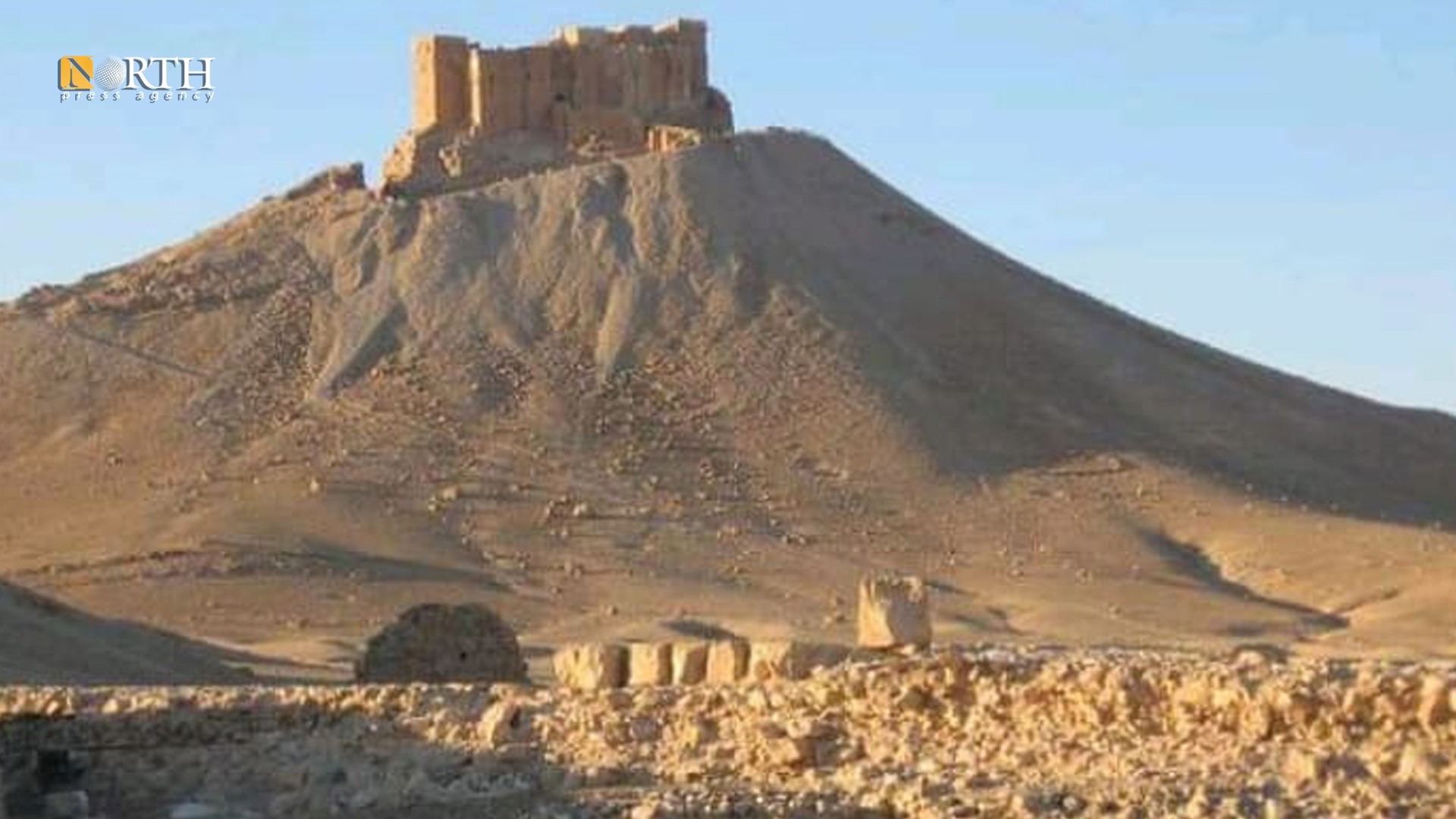PALMYRA, Syria (North Press) – The ancient city of Palmyra in the middle of the Syrian Desert, is witnessing secret excavations of antiquities by groups affiliated with the Islamic Revolutionary Guard Corps (IRGC), using heavy machinery late at night, local sources said.
According to the owners of machinery and those working in the excavations, the Iranian-backed group Harakat Hezbollah al-Nujaba started a new excavation of antiquities in the vicinity of Palmyra in general and its northern outskirts in particular, using heavy machinery.
Hamdi Abdullah (pseudonym), owner of a truck, said he rented his dump truck to Harakat Hezbollah al-Nujaba from 8 pm until 8 am on a daily basis for a sum of 25,000 Syrian pounds (SYP) per day.
In May 2015, ISIS took control of Palmyra, which is on the UNESCO list of archaeological sites, and Syrian government forces retook control of it in March 2016 with the support of Russian air strikes.
However, eight months after ISIS was defeated there, its members regained control of Palmyra again in December 2016.
Following violent battles between the two sides, the government forces managed to regain control over Palmyra in early March 2017, with the support of Russian air strikes.
Rental vehicles
Abdullah indicated that all machinery that work in excavations are owned by residents and were rented by Harakat Hezbollah al-Nujaba, for sums ranging between 15,000 to 40,000 SYP, according to the truck, on a daily basis.
Abdullah told North Press that the group’s members fill up the fuel for the vehicle when it is used and return it to its owner every morning after work is finished, “and there are approximately 20 vehicles excavating for antiquities in the area.”
Abdullwahhab Tahsin, (pseudonym), an excavation worker, works with 15 young men to excavate antiquities in the northern outskirts of Palmyra in groups divided into shifts at night.
According to what Tahsin told North Press, the worker and drivers working in the excavation receive 5,000 SYP per day.
“Our high fares are due to the risks that we may face during our work, which are represented by ISIS sleeper cells and the possibility that we will be exposed to Israeli air strikes because we are working with the Iranian groups.”
UNESCO had said, based on information provided by a UNESCO committee of experts that visited Palmyra, which is listed on the World Heritage site in 2016, that enormous destruction occurred in the Palmyra Museum, where statues and sarcophagi (stone coffin) were deformed, which were difficult to transport to a safe place because of their size. Some of them were smashed and their heads were destroyed.
At the time, the committee monitored the destruction of the Arch of Triumph and The Temple of Baalshamin, which was completely destroyed.
In August 2015, the Syrian Observatory for Human Rights documented the destruction of part of the Temple of Bel by ISIS, which dates back to the Roman era in Palmyra.
On August 25, 2015, ISIS operatives announced the bombing of the ancient Temple of Baalshamin, in an act described by UNESCO as a war crime aimed at erasing a symbol of heritage.
Keep away
Ali Ja’far (a pseudonym), member of Harakat Hezbollah al-Nujaba, said they are protecting the sites north of Palmyra day and night through patrols in addition to fixed and movable checkpoints during the excavation process, at the request of the field command of the Palmyra sector in al-Nujaba.
Ja’far pointed out that the process of protecting the sites after the completion of the work aims to prevent the residents from approaching the excavated places in general and the shepherds in particular, for fear that they will search the sites and find antiquities.
The excavations on the outskirts of the city, located in the eastern countryside of Homs, come in light of the absence of government guards and the failure of the Syrian government to carry out restoration work on archaeological sites.
However, Raed Rajab (pseudonym), an employee at the municipality of Palmyra, attributed the slow restoration of archaeological sites and the lack of guarding to the spread of ISIS sleeper cells throughout the Syrian Desert and the presence of military points near these archaeological sites in the vicinity of the city.
He said the municipality sends garbage truck with garbage men from time to time to clean the archaeological sites around the city from dirt only.
The employee considered that the process of cleaning, rehabilitating and restoring Palmyra archaeological sites falls on the shoulders of the Antiquities Directorate of Homs Governorate and its office in Palmyra, which in turn is waiting for a financial budget and experts from the capital, Damascus.

